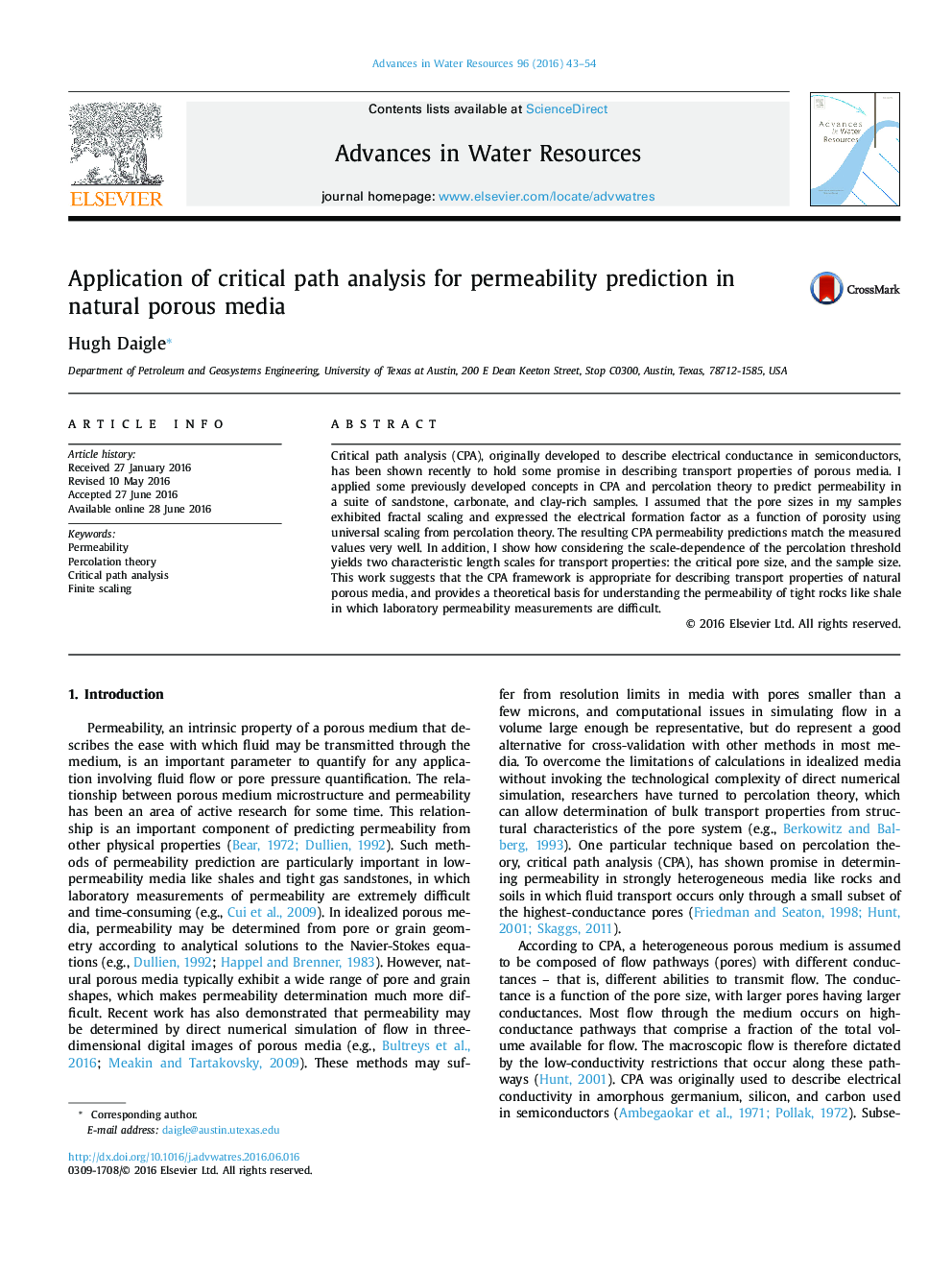| Article ID | Journal | Published Year | Pages | File Type |
|---|---|---|---|---|
| 6380492 | Advances in Water Resources | 2016 | 12 Pages |
Abstract
Critical path analysis (CPA), originally developed to describe electrical conductance in semiconductors, has been shown recently to hold some promise in describing transport properties of porous media. I applied some previously developed concepts in CPA and percolation theory to predict permeability in a suite of sandstone, carbonate, and clay-rich samples. I assumed that the pore sizes in my samples exhibited fractal scaling and expressed the electrical formation factor as a function of porosity using universal scaling from percolation theory. The resulting CPA permeability predictions match the measured values very well. In addition, I show how considering the scale-dependence of the percolation threshold yields two characteristic length scales for transport properties: the critical pore size, and the sample size. This work suggests that the CPA framework is appropriate for describing transport properties of natural porous media, and provides a theoretical basis for understanding the permeability of tight rocks like shale in which laboratory permeability measurements are difficult.
Related Topics
Physical Sciences and Engineering
Earth and Planetary Sciences
Earth-Surface Processes
Authors
Hugh Daigle,
